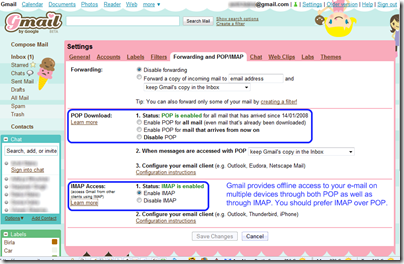IMAP and POP are two most common ways to access your web-based e-mail offline, from multiple devices. Most web-based e-mail providers allow you to configure your desktop based e-mail programs such as Mozilla Thunderbird and Microsoft Outlook to read your e-mail. This includes Gmail, Hotmail and even Yahoo! Mail.
So now the question arises that what exactly is the difference between POP and IMAP, and which is better of the two.
What's the difference between IMAP and POP?
Unlike POP, IMAP offers two-way communication between your online e-mail account and your email clients. This means when you log in to online e-mail account using a web browser, actions you perform on e-mail clients and mobile devices (e.g. moving an e-mail message to the 'Friends' folder) will instantly and automatically appear in your online e-mail account (i.e. it will already have a 'Friends' folder on the next time you sign in).
IMAP also provides a better method to access your mail from multiple devices. If you check your email at work, on your mobile phone, and again at home, IMAP ensures that new mail is accessible from any device at any given time.
Finally, IMAP offers a more stable experience overall. Whereas POP is prone to losing messages or downloading the same messages multiple times, IMAP avoids this through two-way syncing capabilities between your mail clients and your web e-mail account.
(Click the image for a full size version)
If you're trying to decide between using POP and using IMAP, go with IMAP as your first choice. Note that since POP is a simpler protocol to implement, you are more likely to find support for POP than for IMAP.

No comments:
Post a Comment